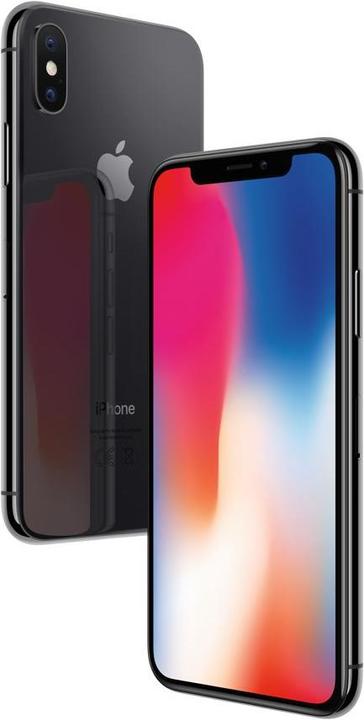

HubblePhone: I'll believe it when I hold it in my hands
The Finnish company Turing Space Industries has announced a phone for 2020 that is set to revolutionise the market at the very least. Nevertheless, industry observers doubt that the phone will ever come onto the market. But it shows that ideas can still be found on the smartphone market.
Is one notch not enough for you? How about four?
"No way," I can hear you thinking, because I can hear people thinking.
But wait a minute. Because the four notches are interesting. Even if they are more of a curiosity than a real product that you can put in your pocket. Let's take a look at the HubblePhone. Because even though the phone will most likely never come onto the market, it's worth taking a look at a design that looks functional and doesn't fit the usual image of a phone at all.
All screen, but with notches
The HubblePhone, currently manufactured by Turing Space Industries, is a phone that does a lot of things differently. It is ambitious and does one thing above all: it breaks with the form factor of the rectangle with rounded corners.
The HubblePhone - named after the astronomer Edwin Hubble - is a flip phone, meaning it has a flip. The phone's screen can be folded on both sides, allowing space for screens inside and out. The parts that are not a screen are said to be made of "liquid metal / titanium aluminide space metal structure". Space metal.
The camera, built into the hinge of the phone, delivers 60 megapixels. All the selfie cams in the phone as well as the microphones and speakers are then responsible for all the notches. Turing Space Industries is obviously hoping that the foldable screens - called "decks" on the HubblePhone - will hide all the notches. Because the notches are prominent. Two notches per deck, i.e. two notches on the inside and two on the outside.
Under the bonnet, the HubblePhone will, or should, at least revolutionise the market, if not the world, according to the manufacturer's advertising copy. Turing Space Industries is holding back a little with real technological details, but is talking a lot of marketing blah-blah.
Translation: The HubblePhone uses a chip that utilises emotional machine intelligence to deliver a next-gen gaming experience. The computing power, multi-screens and advanced camera features create a new dimension in mobile gaming as they combine AR, VR, MR, XR and AfR into a cohesive experience.
Some glossary:
In addition, 5G and pretty much everything you dream of in a smartphone. In other words, no matter what you want from a phone, the HubblePhone exceeds expectations.
The launch has been announced for 31 July 2020.
Why you'll probably never have the HubblePhone
The big problem with the phone, apart from the utopian and almost nonsensical specs, is the manufacturer. Turing Space Industries was once called Turing Robotics and brought the Turing Phone onto the market. Or maybe not.
The pre-announcement of the Turing Phone sounded very similar to that of the HubblePhone. Hammer specs, competitive price, exciting design. But then Turing Robotics went bankrupt and has now apparently found money again somewhere and renamed itself Turing Space Industries. The phones are manufactured in Finland and somehow never delivered.
Why such designs are still necessary
Despite all these wishes and demands, manufacturers are still not directly tempted to fundamentally change the design. The first attempts can be seen in the Vivo Nex and its siblings, which recess the camera into the casing. Is this the last word in wisdom? Probably not, but it shows courage and inventiveness that such devices are finding their way onto the market.
These devices break, if only a little, with the rectangle with rounded corners, try to avoid notches and show that the hardware has not yet been chiselled in stone. They are making the scene a little more exciting again and are not content with the usual "bigger screen, thinner, faster, lighter".
That's a good thing.
Journalist. Author. Hacker. A storyteller searching for boundaries, secrets and taboos – putting the world to paper. Not because I can but because I can’t not.
Interesting facts about products, behind-the-scenes looks at manufacturers and deep-dives on interesting people.
Show all






